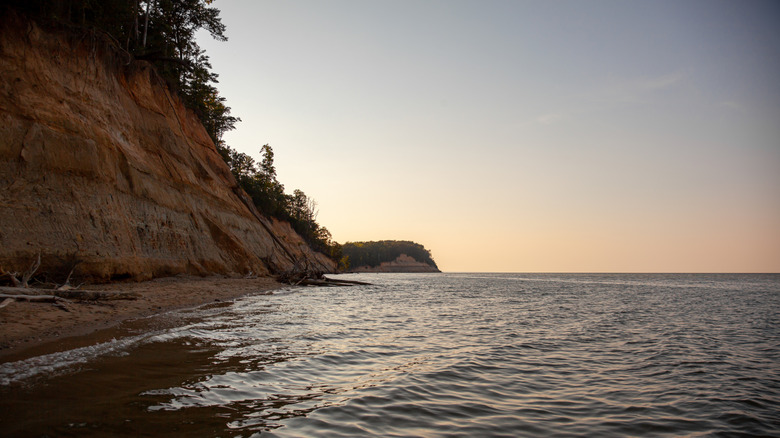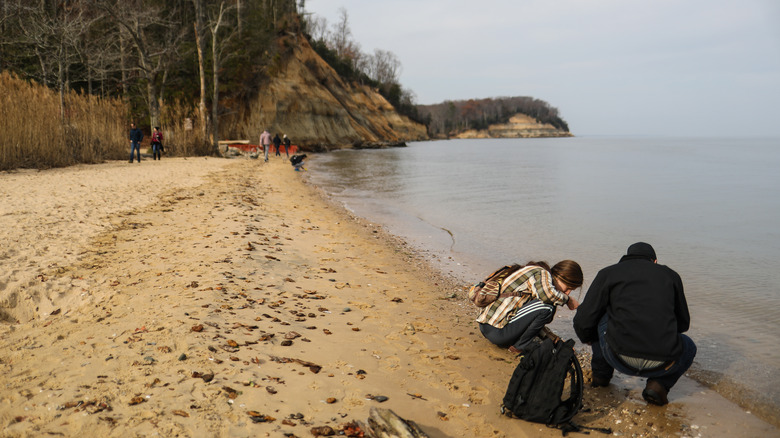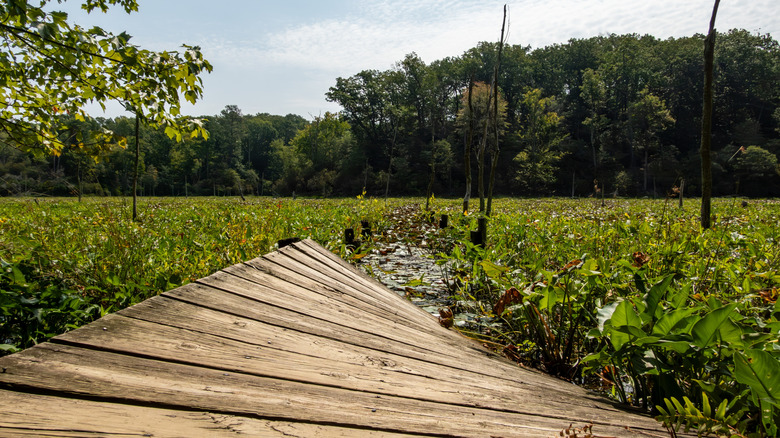Maryland's One-Of-A-Kind Beachy State Park Features Fossil-Rich Cliffs, Wetland Hikes, And A Sandy Coast
The state of Maryland is home to many historic state parks, but not all of them can say they have 15 million years of history. Calvert Cliffs State Park is a coastal gem located on the Chesapeake Bay. Beloved for its sandy shores, beautiful nature, and abundant paleontological history, it's the underrated state park that most tourists overlook.
Named for its looming cliffs, which stretch along 30 miles of coastline and were formed 10 to 20 million years ago when the sea that once covered Southern Maryland began to recede, this unique state park is perfect for a day trip. To reach Calvert Cliffs State Park, it's about an hour and 30 minutes from Washington, D.C., and an hour and a half from Baltimore. If you're visiting during the summertime, try to plan your visit for earlier in the day or on a weekday, if possible, to avoid crowds. To enter the park for the day, it costs $5 per vehicle for Maryland residents and $7 for out-of-state visitors, and is cash only. Calvert Cliffs State Park is open year-round from sunrise to sunset.
Fossil hunting in Calvert Cliffs
Although Maryland's only oceanfront park is Assateague State Park, that doesn't mean there's a shortage of beautiful and one-of-a-kind beaches elsewhere in the state. To get to Calvert Cliffs' gorgeous beach area, follow the Red Trail, a 1.8-mile journey from the parking lot. "It's a beautiful hike, one of the best in Maryland in my opinion," said one Redditor in r/Maryland. Along the way, you're treated to views of wetlands, streams, and forests, all leading up to an awe-inspiring view of the Chesapeake Bay and surrounding cliffs.
It's not your standard beach, either. Although, of course, you can enjoy regular beach activities like swimming or sunbathing here, it also just so happens to be a prime spot for fossil hunting. Throughout the Calvert Cliffs area, over 600 different types of fossils have been found, all ranging from 10 to 20 million years old. To hunt for fossils, it can help to bring a panning sifter or colander. Look out for ancient oyster shells from the Miocene era, shark teeth, and other fossils from long-extinct species, like Chesapectens, an extinct scallop.
Keep in mind that the beach is relatively small, so you may want to check the tides beforehand. Visiting during low tide is an ideal time for both fossil collecting and enjoying the beach. Because of safety concerns about possible landslides, it's not possible to visit the area right beneath the cliffs. The beach also has no lifeguards.
A unique nature destination in Maryland
Apart from fossil hunting, the park is also home to 13 miles of marked foot trails. A popular choice for visitors is to loop around both the Red and Orange Trails, which will take less than two hours total and comes out to just under 5 miles. Depending on how long you're looking to hike, it's easy to navigate through the various trails, as most are interconnected.
If you're looking to fish, that's also possible here. Within the picnic area, you'll find a one-acre pond available for fishing. Just note that anyone 16 years old or above needs a Maryland non-tidal fishing license. A 550-acre area of the park is also open for hunting within certain days and times of year.
Just a 10-minute drive outside the park is the Solomons Inn Resort and Marina, with a 4.6-star rating on Tripadvisor. The waterfront hotel offers an outdoor pool, a fitness center, a complimentary continental breakfast, and free parking. Solomons is also the perfect jumping-off point for exploring other scenic areas in Maryland; for example, it's less than 20 miles away from Maryland's oldest town, St. Mary's City.


